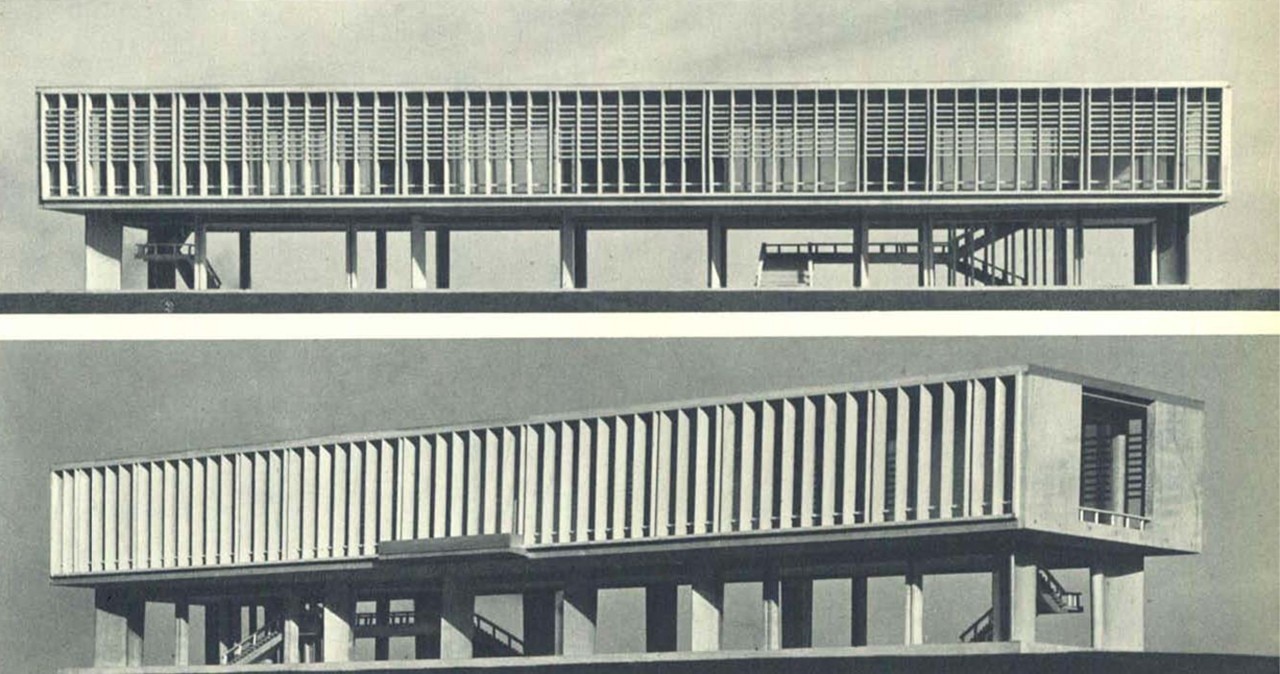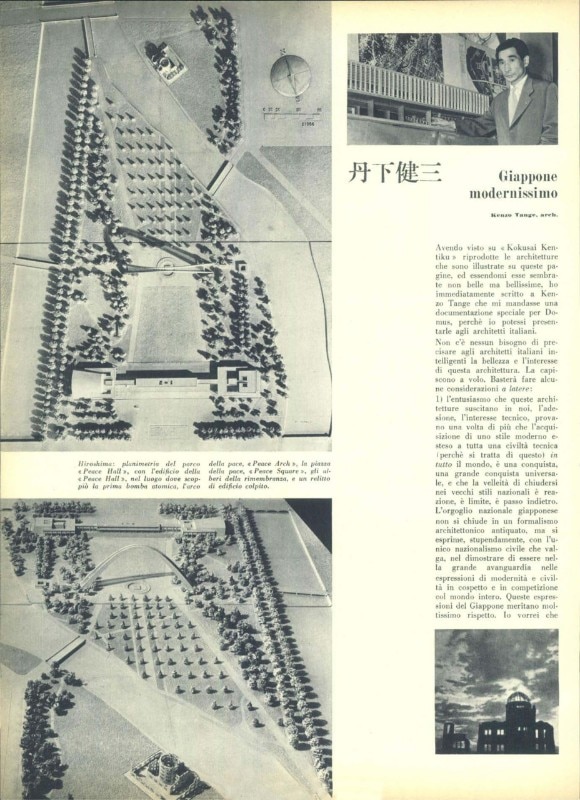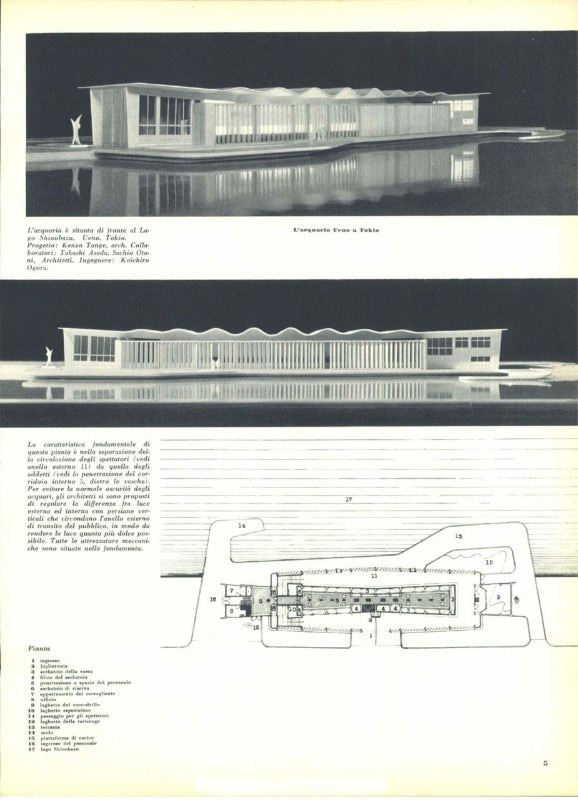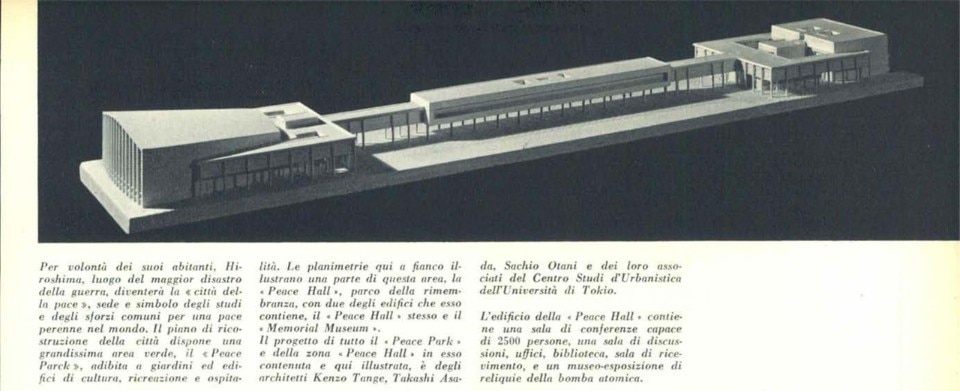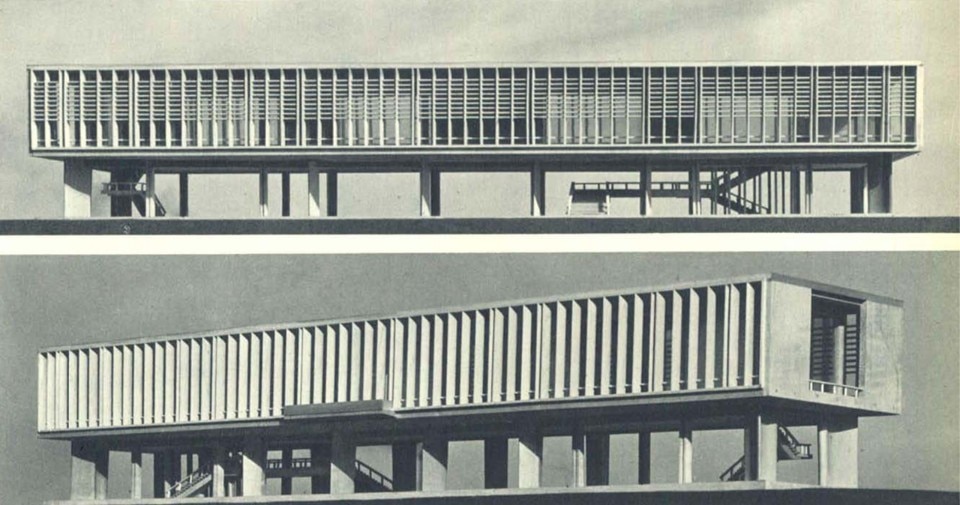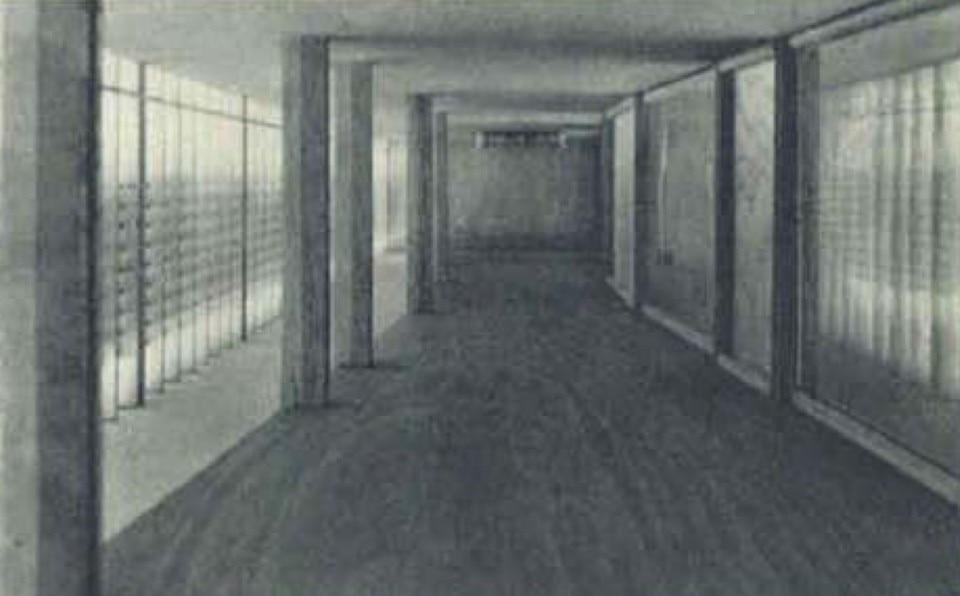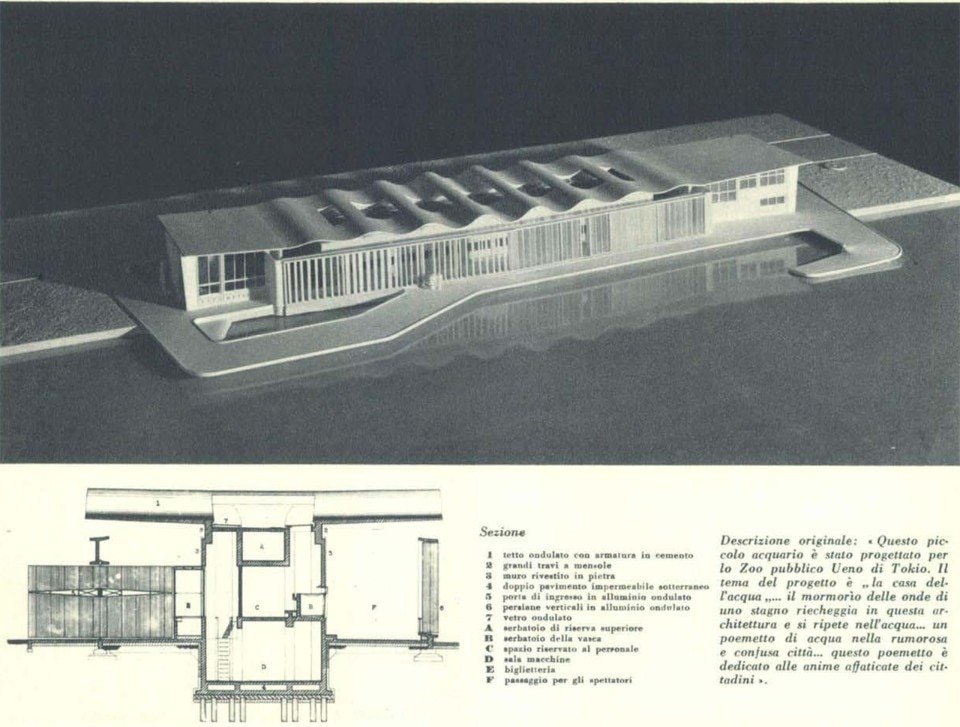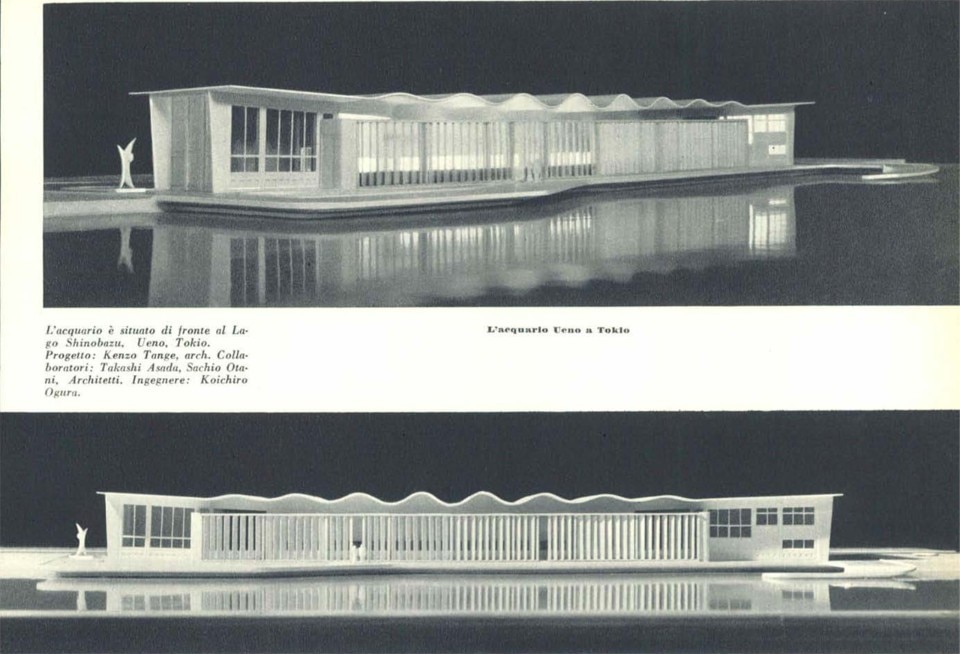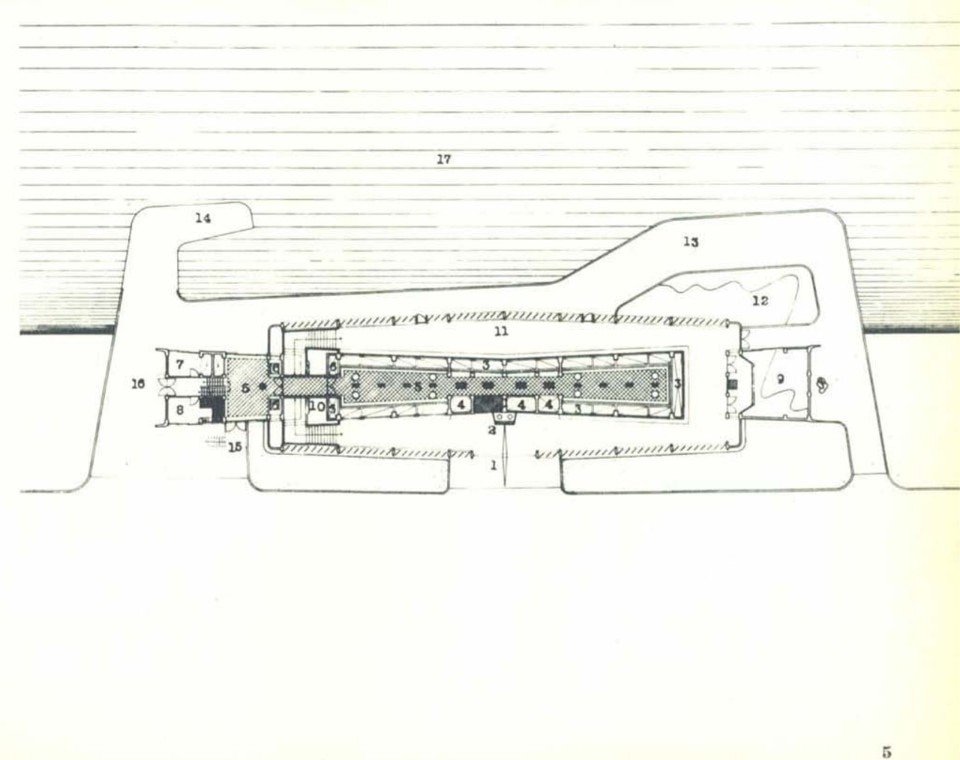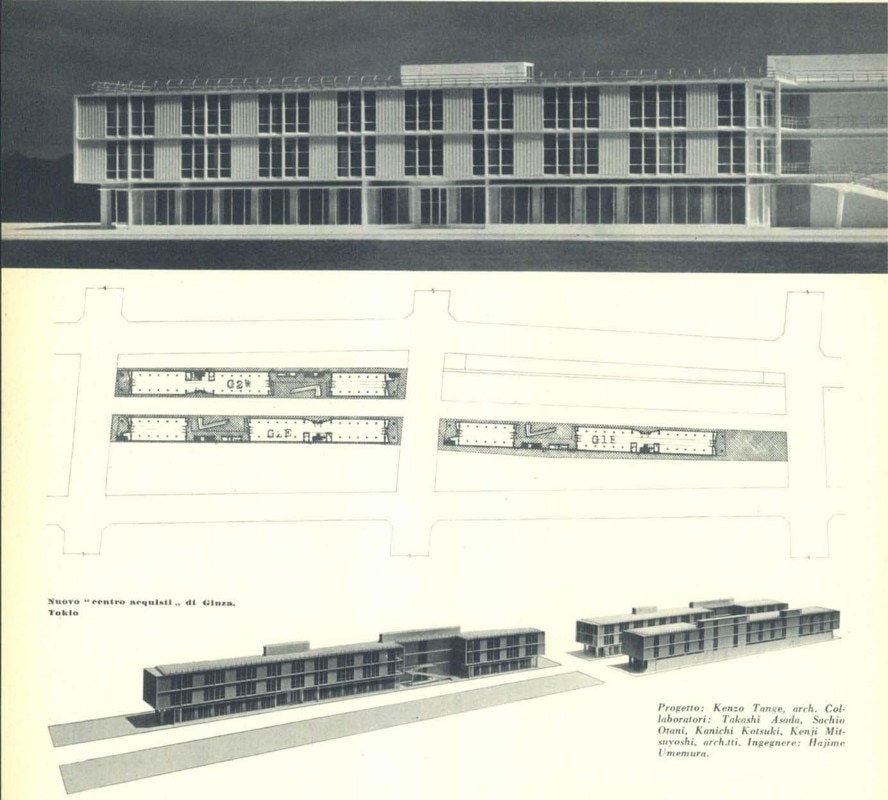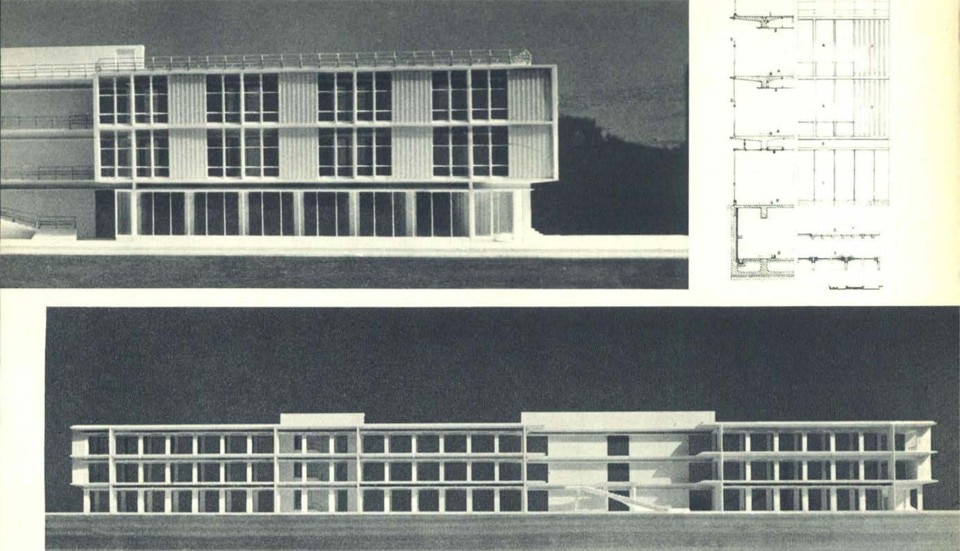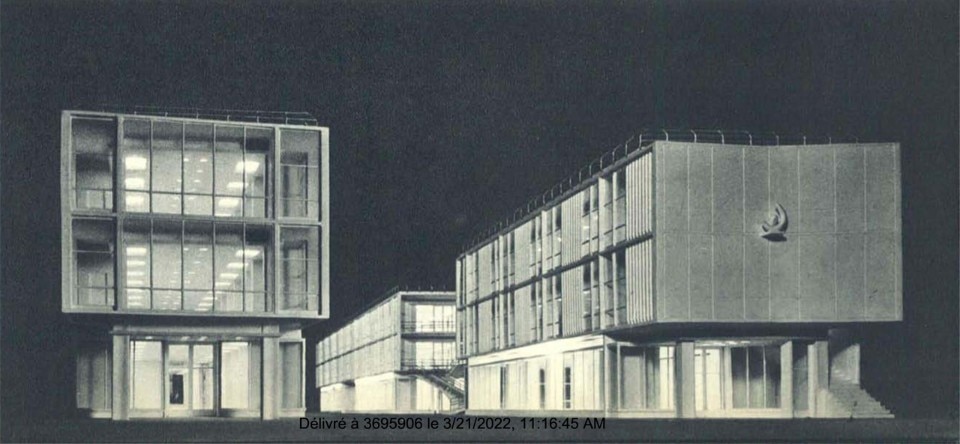Kenzo Tange’s first appearance on Domus originated from a courageous choice, to tackle an extremely delicate subject, which unfortunately is now a global priority again. In 1952 Gio Ponti focused on post-war Japan: the atomic bombs on Hiroshima and Nagasaki were less than seven years away. Projects of a new generation of Japanese architects became an opportunity to think about a new modernity, as an engine pushing people to look ahead, and think globally without closing in on anachronistic nationalism. The article was published on issue 269 in April 1952, and was titled Giappone Modernissimo (Modern Japan).
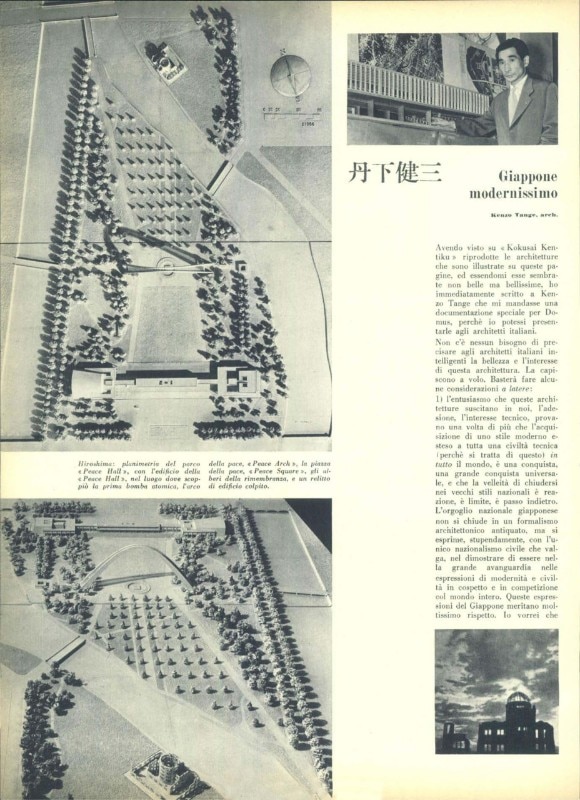
Having seen on “Kokusai Kentiku” the architectures illustrated on these pages, and having left me speechless, I immediately wrote to Kenzo Tange to send me special documentation for Domus, so that I could show them to Italian architects.
There is no need to point out to the brilliant Italian architects that beauty is the main focus of this architecture. They immediately understand it. It is enough to make a few observations:
1) the enthusiasm that these architectures arouse in us, the support, the technical interest, prove once more that the acquisition of a modern style extended to an entire technical civilisation (because this is what it is about) all over the world, is a conquest, a great universal conquest, and that desire of limiting in the old national styles is a reaction, a limit, a step backwards.
Japanese national pride does not close itself up in an outdated architectural formalism, but expresses itself wonderfully using the only worthwhile civil nationalism, demonstrating that it is in the great avant-garde in terms of modernity and civilisation expressions in the presence of and in competition with the entire world. These expressions of Japan are worthy. I would like to see something similar arise here in Italy, where instead we see, to name but one, the damage of the last bridge in Rome.
2) The ways of the Lord are truly mysterious. This, Japan, would be a “defeated people” and it bears these wonderful fruits! Where we see that there is no victory or defeat in history, there is no historical situation of victory or historical situation of defeat, there is only an invincible spirit and soul and a defeated spirit and soul. We see that history goes on and its evils can be its goods, and that the defeated remain strong if they are strong, and the winners remain weak if they are weak. We see that victory exhausts, or defeat strengthens, and that life (history) continues and it is nothing but vitality. Japan is proving to be terribly alive, so is Germany, and so is America. In some ways, even this crazy Italy of ours is proving it. Winners and losers, going further together.
3) Notice certain poetic, allegorical allusions in these architectures (the wave roof in the aquarium). They are simple, spontaneous and soft. Why not?
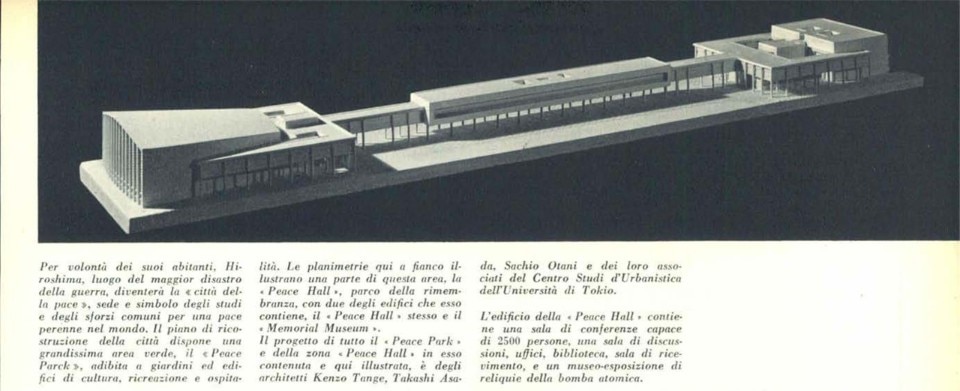
The “Peace Hall” in Hiroshima
According to the will of its inhabitants, Hiroshima, the site of the war greatest disaster, will become “the city of peace”, the place and symbol of studies and joint efforts for eternal peace in the world. The city’s reconstruction plan includes a huge green area, the “Peace Parck”, used as gardens and buildings for culture, leisure and accommodation. Here, the plans illustrate a part of this area, the “Peace Hall”, a park of memory, with two of the buildings it contains, the “Peace Hall” itself and the “Memorial Museum”. The design of the entire “Peace Parck” and the “Peace Hall” area it contains, illustrated here, is realised by the architects Kenzo Tange, Takashi Asada, Sachio Otani and their associates at the Centre for Urban Planning Studies at the University of Tokyo.
The “Peace Hall” building houses a lecture hall for 2500 people, a discussion room, offices, a library, a reception room, and a museum-exhibition of atomic bomb relics.
Started in April 1951, the “Memorial Museum” is the first building under construction of the “Peace Hall”. It is a memorial chapel to the victims of the war.
The building, made of reinforced concrete, has two floors: the first floor, completely open, supports on earthquake-proof pillars the second floor (exhibition hall with balcony on the square) built with a lightweight frame. This modern structure repeats the characteristics of ancient Japanese architecture, raised on pillars and running horizontally. The shape of the pillars and the gentle slope of the staircase give movement to the rectilinear structure.
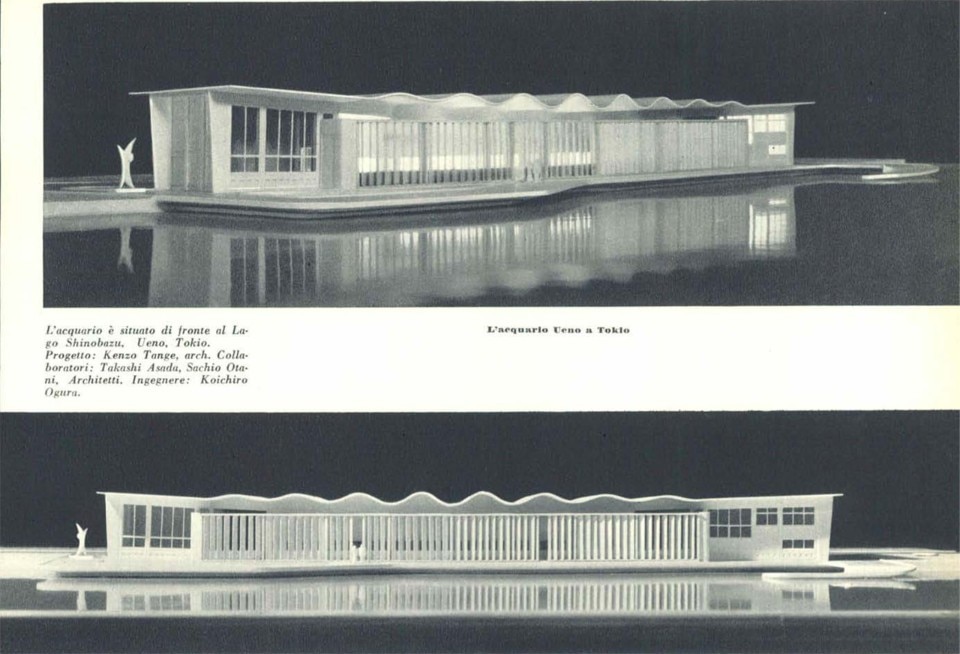
The Ueno Aquarium in Tokyo
The aquarium is located in front of Shinobazu Pond, Ueno, Tokyo. Project: Kenzo Tange, Arch. Contributors: Takashi Asada, Sachio Otani, Architects. Engineer: Koichiro Ogura.
The fundamental characteristic of this plan is in the separation of the spectators’ flow (see outer ring 11) from that of the employees (see the penetration of interior corridor 5, behind the tanks). In order to avoid the usual darkness of the aquariums, the architects set out to regulate the difference between outside and inside light with vertical shutters surrounding the outer ring of public transit, so as to make the light as soft as possible. All mechanical equipment is located in the foundations.
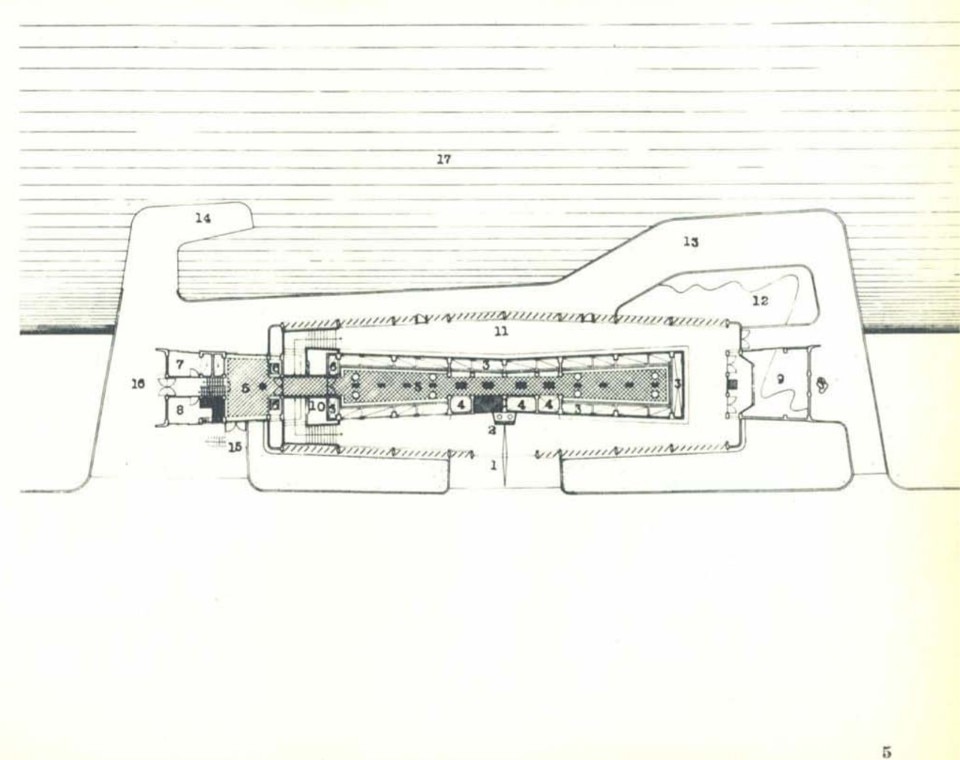
New “shopping centre” in Ginza, Tokyo
In Japan, the streets of shopping districts are characterised by a large number of “stalls” of hawkers lined up along the pavement, which is both unattractive and unhygienic and obstructs traffic in the city. The Tokyo authorities have been urged to eliminate this inconvenience and the financial and urban planning possibilities of the solution have now been reached.
Thus, the new Ginza shopping centre was designed, clearing the famous Ginza Street. This centre consists of three buildings that will be built on three small plots obtained by draining the canal near the Ginza Street. These plots are approximately 11 metres wide and 120 metres long. The buildings will house restaurants and shops on the ground and first floors, and office space on the second and third floors.
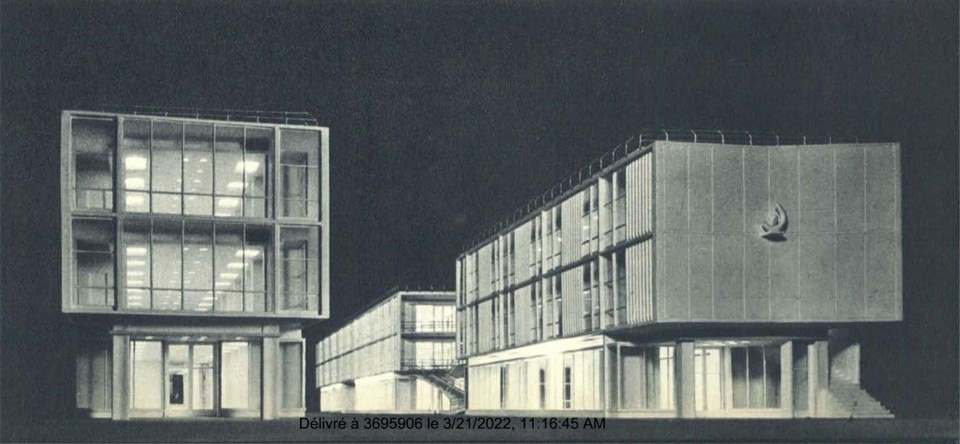
In Japan, reinforced concrete buildings have generally assumed the type of heavy monolithic construction, i.e., the arrangement of concrete frames and beams in a unit that resists strong earthquakes. However, very few studies have focused on reducing the dead weight of the structure, which hinders the progress of modern Japanese architecture in terms of concrete construction, both economically and functionally. Here the architects made a positive effort to reduce the dead weight of the construction, using thin concrete panels for the walls and opening up large floor-to-ceiling windows.
The construction is on a raft or boat with inverted beams, from which the two longitudinal rows of pillars cantilever and bridge the floors. The outer walls are thin concrete slabs. The internal partitions are movable and can be disassembled for the more flexible use of office floors.


